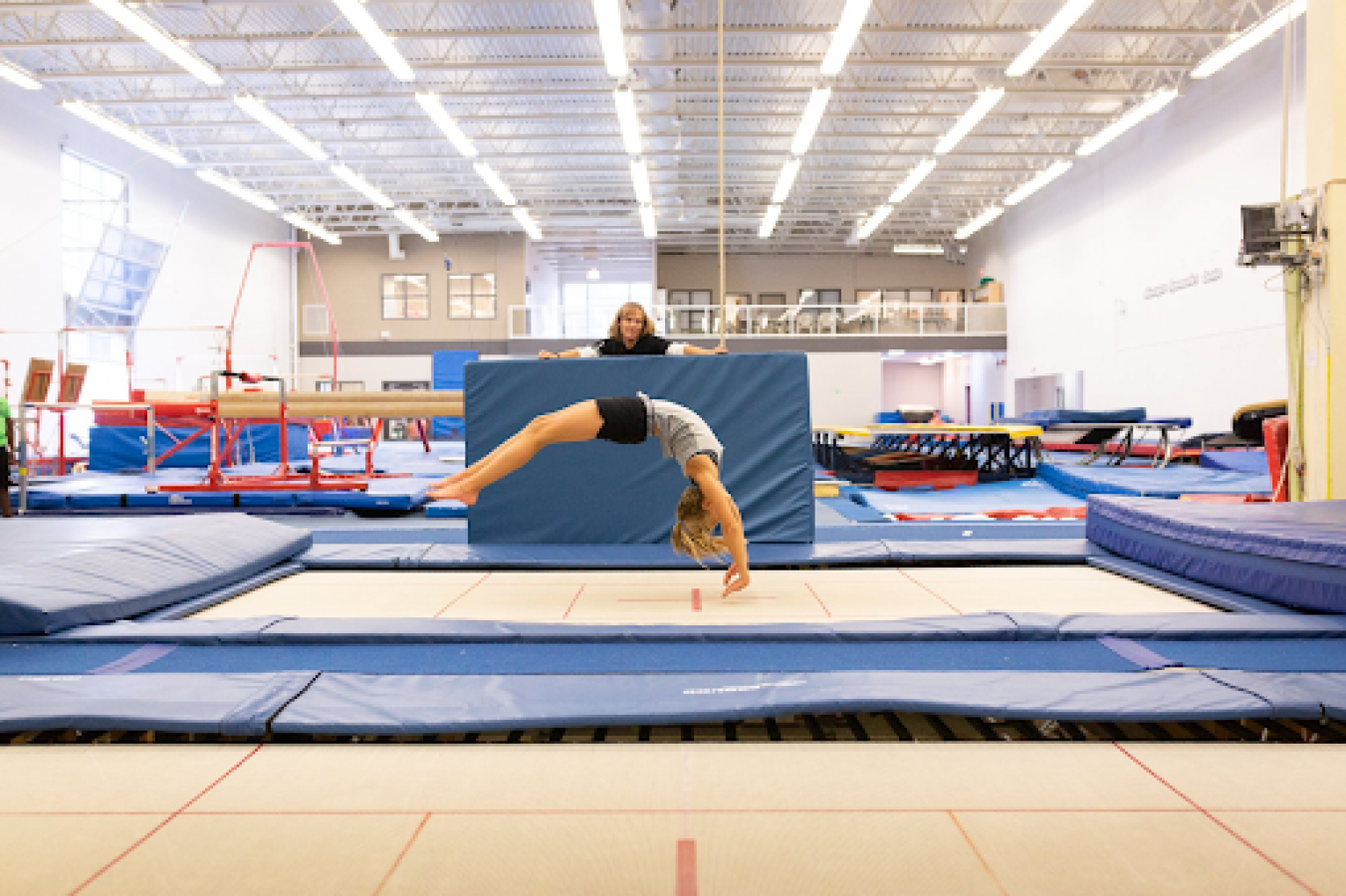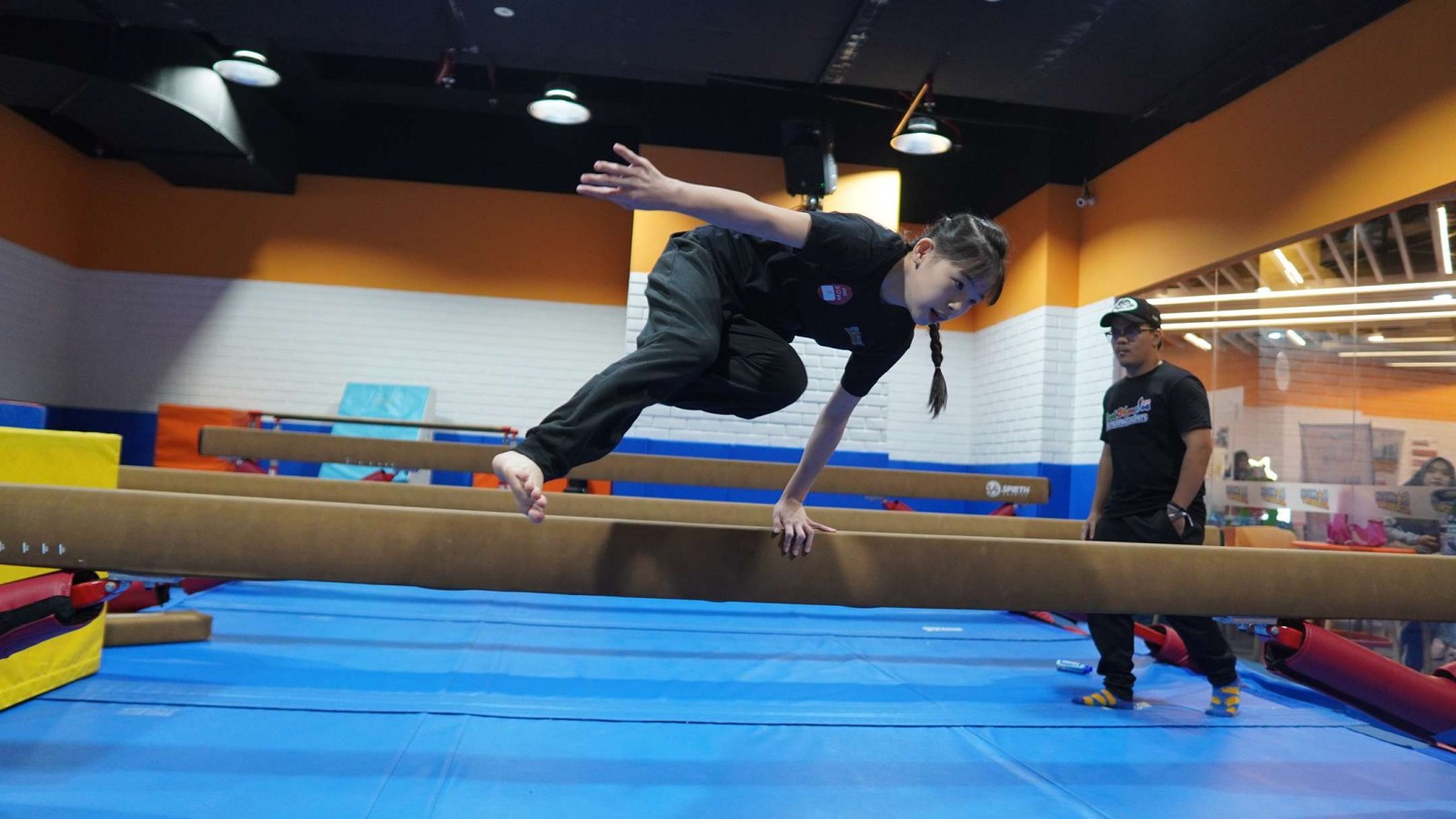A Complete Guide to Trampoline Gymnastics: Disciplines, Rules, and Scoring

Have you ever heard about trampoline gymnastics? Imagine flying high into the air, performing flips and twists with absolute precision, all while defying gravity. Sounds exciting, right?
Trampoline gymnastics is a thrilling sport that combines incredible athleticism, flexibility, and some jaw-dropping acrobatics. In this guide, we will walk you through everything you need to know, from its rich history to the disciplines, rules, and scoring system. Let’s bounce right in!
What Is Trampoline Gymnastics?
Trampoline gymnastics is a competitive sport where athletes perform acrobatic routines on a trampoline. These routines include flips, twists, and complex aerial maneuvers, all executed with precision and style.
While it may look like pure fun, trampoline gymnastics is a serious discipline requiring strength, coordination, flexibility, and nerves of steel. This sport isn’t just about bouncing but it’s also about turning those bounces into jaw-dropping performances that seem to defy physics!
A Brief History of Trampoline Gymnastics
The trampoline as we know it today was invented in the 1930s by George Nissen and Larry Griswold, who were inspired by the safety nets used by circus acrobats. Initially, trampolines were used for training astronauts and pilots to improve their spatial awareness.
It didn’t take long for trampoline jumping to evolve into a competitive sport. By the 1950s, organized trampoline competitions were taking place, and in 2000, trampoline gymnastics officially became an Olympic sport at the Sydney Games.
Since then, it has gained global popularity, with athletes from around the world showcasing their incredible talents.
What Are the Rules?
In trampoline gymnastics, each athlete’s routine consists of 10 different moves. These routines are scored based on how difficult the skills are, how well they are executed, and how much time the gymnast spends in the air.
In the qualification round, 16 men and 16 women compete, performing two routines each. Their combined scores rank them from 1st to 16th, and the top eight athletes from each gender move on to the finals.
In the finals, each gymnast performs just one routine, and the medals are awarded based on that final performance.
The Disciplines of Trampoline Gymnastics
Trampoline gymnastics has three main disciplines. Each offers a unique take on the sport:
1. Individual Trampoline
In this discipline, athletes perform a series of ten consecutive skills, such as flips and twists, on a trampoline. Judges evaluate their performance based on difficulty, execution, and time of flight.
2. Synchronized Trampoline
This discipline features two athletes performing the same routine simultaneously on separate trampolines. The challenge lies in maintaining perfect synchronization while executing the complex moves.
3. Double Mini-Trampoline (DMT)
In this exciting variation, athletes run toward a smaller trampoline, perform gymnastic jumps onto the trampoline, and execute acrobatic skills before landing on a designated mat. The double mini-trampoline adds an element of speed and power to the mix.
4. Tumbling
Tumbling involves athletes executing two passes, showcasing a series of forward, backward, and sideward movements, transitioning from hands to feet and feet to feet.
Olympic Trampoline Size: How Big Are They?
The trampolines used in Olympic competitions are not your backyard variety. They are specially designed to maximize height and control, measuring 5.05 meters long, 2.91 meters wide, and 1.155 meters high.
The trampoline bed is made of durable synthetic materials, allowing for maximum elasticity and precision. These trampolines are capable of propelling athletes up to 8 meters (26 feet) into the air, giving them the space to perform breathtaking routines.
How is Trampoline Gymnastics Scored?
In trampoline gymnastics, scoring is made up of four main components: difficulty, execution, time of flight, and horizontal displacement. All of these scores are combined, and any penalties are subtracted to get the final score for a routine.
Unlike other gymnastics events, if an athlete falls off the trampoline or touches the surrounding matting, their routine ends right there. They only receive points for the moves completed before the fall.
Here’s a closer look at each scoring element:
A. Difficulty (D Score)
Two judges determine the "degree of difficulty" (DD or tariff) of the routine. Each move is given a specific point value based on its complexity. For example, a single tucked somersault is worth 0.5 points, while a triple tucked somersault with a half twist scores 1.7 points. Every routine is also recorded on video to double-check the difficulty score.
B. Execution (E Score)
Six judges evaluate the gymnast’s form during the routine. They look at whether the legs stay together, the body stays straight, shapes are defined, and whether the twisting finishes with the gymnast parallel to the trampoline. To get the final execution score, the highest and lowest scores are removed, and the remaining scores are added together.
C. Time of Flight (ToF)
This score tracks how long the gymnast is actually in the air, measured electronically. It doesn't count the time spent touching the trampoline bed, which is important because, if done manually, a stopwatch would measure around 3 seconds more than the "Time of Flight" machine.
D. Horizontal Displacement (HD)
This was once part of the execution score, but now it’s a separate category. It starts at 10, and any deductions happen if the gymnast doesn’t land in the center of the trampoline. Special sensors placed under the trampoline frame measure how far the gymnast moves horizontally during the routine.
E. Synchronization (S Score)
In synchronized trampoline, judges evaluate how closely the two athletes match their movements throughout the routine.
Ready to See Your Child Soar in Trampoline Gymnastics?
If your little one is showing an interest in gymnastics and you want to help them reach their full potential, enrolling them in a top-notch gymnastics program is a fantastic choice.
At Rockstar Academy, the best Sports & Performing Arts Academy, we offer an array of physical activity programs designed to nurture talent and improve skills. Our gymnastics programs include Gymnastics Testing to help students progress to higher levels, preparing them for both National & International competitions.
Plus, our Gymnastics Elite Championships provide a fun, competitive environment where kids learn discipline, sportsmanship, and how to handle both winning and losing gracefully.
If your child dreams big, they can join our Dream Team—an elite Competitive Sports Program that trains students to reach their maximum potential in sports and life. With 180 minutes of high-intensity training led by expert instructors, this is the perfect way to take their gymnastics journey to the next level.
Still unsure? No worries! Rockstar Academy offers free trial classes for anyone eager to give it a go. Ready to start the adventure? Contact Rockstar Academy today and let’s help your child achieve their dreams!
FAQ
Can anyone try trampoline gymnastics?
Yes. Trampoline gymnastics can be enjoyed by people of all ages and skill levels. Beginners often start with basic bouncing techniques before progressing to advanced moves.
Is trampoline gymnastics safe?
Safety is a top priority in trampoline gymnastics. With proper coaching, equipment, and safety measures, the risk of injury is minimized.
How high do athletes jump in trampoline gymnastics?
Elite trampoline gymnasts can reach heights of up to 8 meters (26 feet) during their routines.



